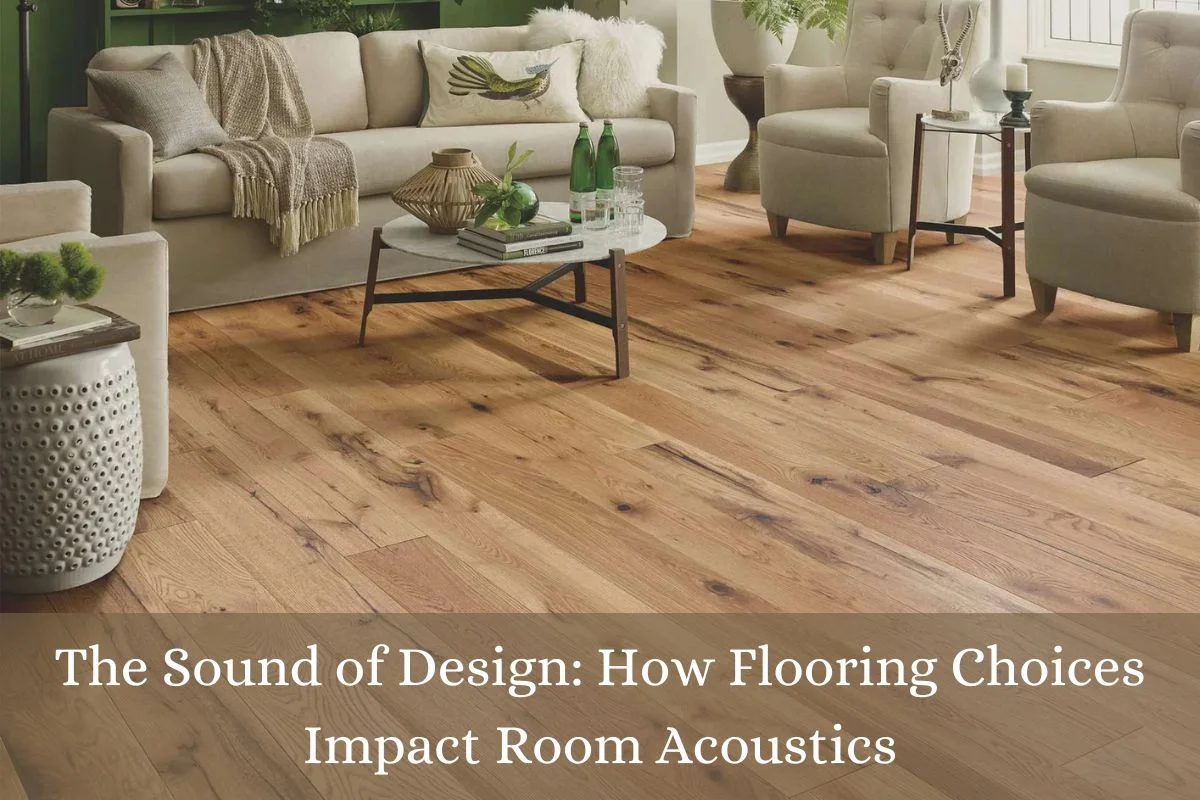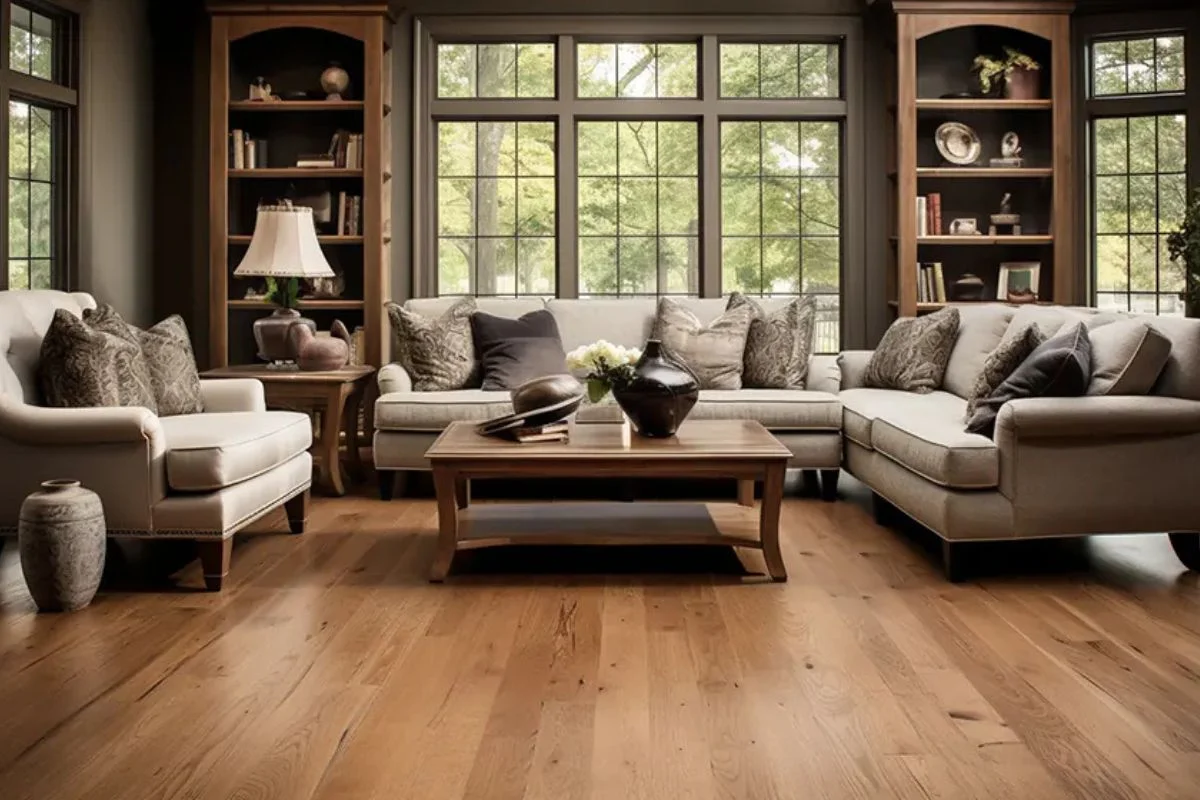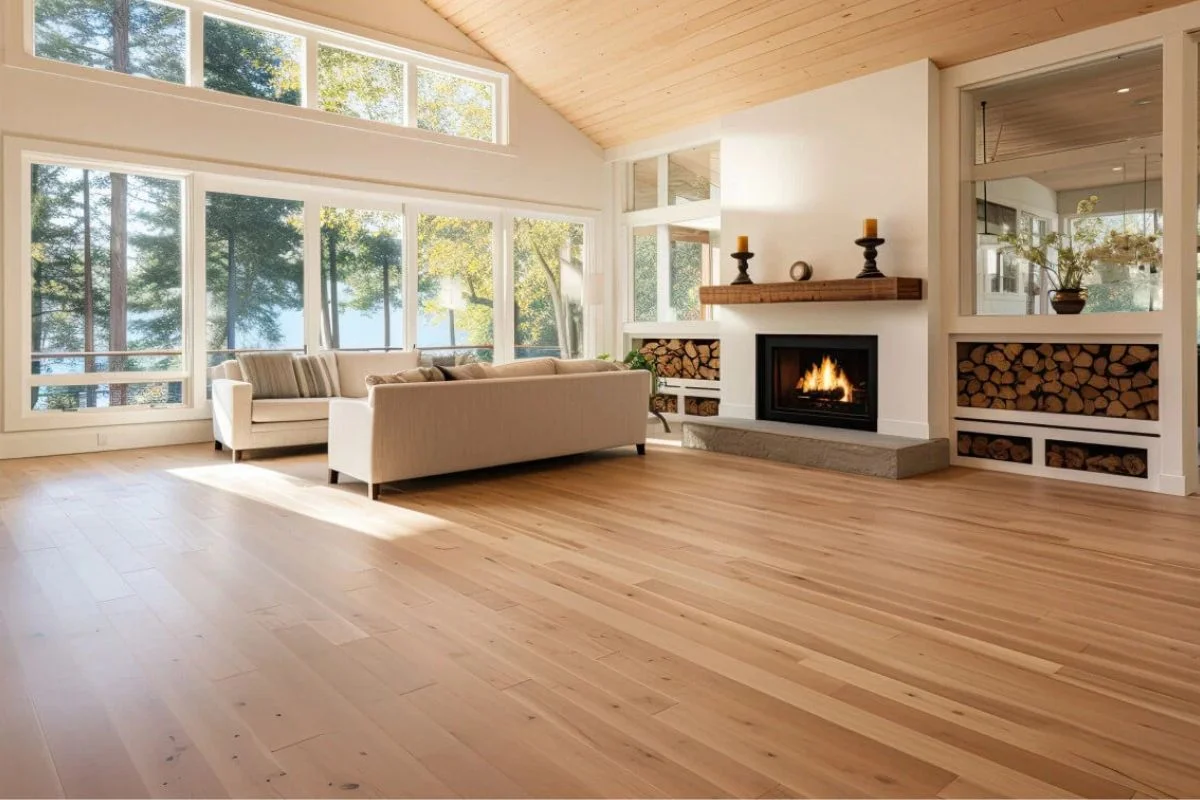When designing a space, we often focus on visual elements like colors, textures, and furniture arrangements. But have you ever stopped to consider how a room sounds? Acoustics play a crucial role in creating comfortable and functional environments, especially in spaces like offices, restaurants, or conference rooms. Flooring, often overlooked in acoustic planning, significantly influences how sound travels and is absorbed in a room.
In this guide, we’ll explore how different flooring materials impact room acoustics, helping you make informed choices that balance aesthetics, functionality, and sound control for your unique space.
Understanding Room Acoustics
Room acoustics define how sound behaves within a space, influencing the clarity, comfort, and overall experience of being in that room. Sound travels in waves, bouncing off hard surfaces or being absorbed by softer materials. Key acoustic concepts include echo, which occurs when sound reflects multiple times, and reverberation, the persistence of sound after the source stops. Effective acoustic design aims to balance sound absorption and reflection, ensuring optimal clarity without excessive noise. By understanding room acoustics, designers can create spaces that not only look great but also sound comfortable and functional for their intended use.
The Role of Flooring in Acoustics
Flooring plays a pivotal role in shaping a room’s acoustic environment. Hard flooring materials, like wood or tile, reflect sound waves, amplifying noise and creating echoes. In contrast, soft flooring, such as carpet or cork, absorbs sound, reducing noise levels and preventing echoes. The flooring’s thickness, texture, and material directly impact its ability to dampen impact noise, such as footsteps or dropped objects. Choosing the right flooring material can enhance the room’s acoustic quality, ensuring it aligns with the space’s purpose, whether it’s for quiet focus, lively interaction, or optimal audio performance.
Types of Flooring and Their Acoustic Properties
Different flooring types offer distinct acoustic benefits and challenges. Hard flooring, like hardwood, stone, or ceramic tile, reflects sound, leading to louder, more echo-prone spaces. Soft flooring, such as carpets or rugs, excels in sound absorption, making it ideal for reducing noise in busy areas. Cork flooring provides a balance, offering both sound dampening and durability. Engineered solutions, such as acoustic underlayments combined with laminate or vinyl flooring, can enhance noise control without sacrificing style. Specialized acoustic flooring materials are designed to minimize sound transfer, making them perfect for spaces requiring advanced soundproofing.
Choosing Flooring Based on Room Purpose
The flooring choice should align with the room’s purpose. Offices benefit from sound-absorbing materials to reduce distractions and enhance productivity. Restaurants need flooring that balances noise reduction with a lively ambiance, such as engineered wood with acoustic underlays. In residential spaces, particularly multi-level homes, soundproofing with carpets or cork is crucial to minimize noise transfer. Performance venues or event spaces require specialized acoustic flooring to ensure clear sound quality for audiences. By considering the room’s function, designers can select flooring that optimizes both sound and usability for a comfortable and effective environment.
Acoustic Enhancements for Flooring
Acoustic performance doesn’t stop at the flooring material; additional enhancements can further improve sound control. Rugs and carpets are excellent supplemental sound absorbers, especially in spaces with hard floors. Acoustic underlayments, made from foam, rubber, or cork, can significantly reduce impact noise and sound transfer between floors. Combining flooring with other acoustic treatments, such as wall panels or ceiling baffles, creates a holistic sound management system. These enhancements allow designers to optimize room acoustics without compromising the aesthetics or practical needs of the space, making it adaptable to its purpose.
Striking the Perfect Chord: Merging Style and Sound Control in Flooring Design
Designers often face the challenge of balancing visual appeal with acoustic functionality. While hard flooring like polished wood or stone may fit a space’s aesthetic, it can lead to noisy environments. Soft flooring or acoustic treatments can offset this, blending into the design with creative use of textures, patterns, and colors. Layering rugs over hard floors provides both style and sound dampening. Modern acoustic flooring options mimic natural materials, offering aesthetic flexibility without sacrificing sound control. Achieving harmony between looks and acoustics ensures the space remains both visually inviting and acoustically comfortable.
Environmental Factors to Consider
Environmental factors significantly impact flooring acoustics. Large, open spaces with high ceilings amplify sound reflections, making hard flooring more echo-prone. Small or crowded rooms may require more sound-absorbing materials to prevent excessive noise. Furnishings, such as upholstered furniture, curtains, and decor, contribute to overall sound absorption, complementing the flooring choice. Additionally, climate plays a role—materials like hardwood can warp in high humidity, affecting both durability and acoustics. By accounting for these factors during design, you can ensure the flooring not only looks great but also performs acoustically under the space’s unique conditions.
Case Studies or Practical Examples
Real-life examples highlight the transformative power of flooring choices on acoustics. An open-plan office introduced carpet tiles with acoustic backing, significantly reducing noise levels and improving focus. A bustling restaurant installed cork flooring to absorb sound, creating a lively yet comfortable dining experience. In a multi-level apartment building, acoustic vinyl with an underlayment minimized noise transfer between units, enhancing resident satisfaction. Performance spaces, like theaters, benefit from specialized acoustic flooring that ensures clear sound projection. These examples demonstrate how thoughtful flooring choices can solve acoustic challenges while enhancing overall functionality and ambiance.
Sustainable Acoustic Flooring Options
Eco-friendly acoustic flooring options combine sustainability with sound control. Materials like cork and bamboo are renewable and naturally sound-absorbing, making them excellent choices for green designs. Recycled carpets and rugs offer additional sound-dampening benefits while reducing environmental impact. Manufacturers are increasingly offering flooring certified by organizations like the Forest Stewardship Council (FSC), ensuring responsible sourcing. Eco-friendly underlayments made from recycled rubber or felt further enhance soundproofing. By choosing sustainable options, you can create acoustically optimized spaces that align with environmental values and resonate with eco-conscious users.
Conclusion: The Sound of Design
The soundscape of a room is as important as its visual design, and flooring plays a central role in shaping it. From reducing noise in busy offices to creating ambiance in restaurants, the right flooring can transform a space acoustically and functionally. By considering the room’s purpose, acoustic properties of materials, and environmental factors, designers can make informed flooring choices that balance style and sound. Whether prioritizing sustainability, aesthetics, or advanced acoustic performance, thoughtful flooring design ensures every space is not only seen but also heard in its best light.








